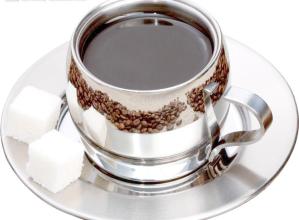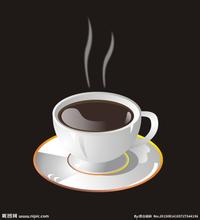Description of Manning Coffee Flavor in Indonesia introduction to the characteristics of manor prices in producing areas
The topography of Sumatra is long and narrow. The topography of Sumatra is mainly from northwest to southeast of the island's Bali Mountains Barisan Mountains and the eastern lowlands. The mountains stretch, with more than 90 volcanoes and many volcanic lakes, volcanoes provide fertile soil suitable for coffee growth. For the tropical rain forest climate, high temperature and rainy all the year round.
Sumatra is the largest producer of Indonesian coffee, and well-known coffee-growing areas are mainly concentrated in the northern mountains, including Aceh in the northernmost province of Aceh and Sumatera Utara in North Sumatra. Including the well-known Mantenin Mandheling, Lin Dong Lintong, Jiayushan Gayo Mountain.
The name of Mandheling coffee is said to come from the local people, mandailing. The producing areas mostly point to the mountains in the north of Lake dopa, and the specific producing areas need to be verified.
Lintong coffee comes from the foothills around Lake Lake Toba in North Sumatra, Sumatra's largest volcanic lake, and its name comes from the small town called lintong in the southwest of Lake dopa.
Gayo mountain Coffee from Takengon, Takangong, Aceh Province and the mountains around Lake Lake Tawar.
Medan Medan and Padang Padang are important cities involved in coffee. They are the capital of North Sumatra and West Sumatra respectively, and they are also the most densely populated areas in Sumatra. The former is an important distribution center for Sumatra coffee exports, while the latter is also a well-known coffee production around, such as Ankola.
Coffee from Sumatra includes Arabica and Robusta, which is usually grown at high altitudes in the mountains, while robusta is grown in the lowlands. Coffee treatment is famous for the traditional "wet planing", Giling Basah,wet-hulled, which is partly derived from the local humid climate Java to produce delicate aromatic coffee with relatively low acidity, delicate taste and good balance. Java coffee has a better aroma and acidity than coffee from Sumatra and Sulawesi. The best plantations in Java are Blawan, Jambit, Kayumas and Pankur. Java mocha is a mixture of Java coffee and Yemeni mocha coffee.
Sumatra, the second largest island in the Indonesian archipelago, is the center of Indonesia's oil industry, and its rubber and timber are also famous exports. However, the coffee in Sumatra is more eye-catching, which is similar to Java coffee, but with slightly heavier grains. Coffee beans from Mandheling and Ankola have also received a lot of attention, and the former is even known as the world's fullest coffee beans.
The island of Sulawesi, located between Borneo and New Guinea, is sometimes called Celebes. The coffee produced on the island is full of grains and rich in flavor. The best coffee beans come from Kalossi and Rantepao in the southern part of the island. Among the many tastes of spleen, try Celebes Kalosi coffee. Most of Celebes' Kalossi coffee beans are washed beans, which are thick in texture, but also highly acidic, and contain the flavor of wild mushrooms and similar herbal medicines. Not many people like them, and most of them are sold to the United States and Japan. Aged coffee beans are also famous in Celebes, but they are very expensive and have to be stored in a warm and humid climate for the best results. Old coffee beans will not find any sour taste at all after roasting. It is rich in texture and mellow in taste, and the effect is like old red wine. Coffee lovers must try it when they have the opportunity to go to Celebes in Indonesia.
Java coffee beans have now lost their proud name: mocha-Java, because in the early 1970s, farmers cut down traditional coffee trees and planted some high-yield and high-profit coffee beans. In Java, most coffee beans are dried by high-temperature machines, so they have lost the reality of coffee, and the sour taste will be obvious after baking, so it can be said that it is difficult to find high-quality Arabica coffee beans in Java.

Important Notice :
前街咖啡 FrontStreet Coffee has moved to new addredd:
FrontStreet Coffee Address: 315,Donghua East Road,GuangZhou
Tel:020 38364473
- Prev

There are several flavors of Panamanian Coffee-introduction of Grinding degree of varieties in Manor producing area
Panamanian coffee is famous for the rosy summer of the Emerald Manor, which is also famous in the Boquete region of its Chiriqui province. Poquet Boquete is a town of Chiriqui in the province of Riki. It is located near the border between Panama and Costa Rica, near the famous Baru Baru volcano.
- Next

Where is the origin of Blue Mountain Coffee? what are the characteristics of Blue Mountain coffee?
Jim, general manager of Pitt, which is famous for its coffee and tea business in the United States, said of Blue Mountain Coffee: it tastes fragrant, smooth and mellow, and it makes me feel as precious as a gem. It is precisely because the taste of Blue Mountain Coffee is moderate and perfect, so Blue Mountain Coffee is generally drunk in the form of black coffee. Its liquid is golden in the sun and tastes smooth. Coffee books.
Related
- Detailed explanation of Jadeite planting Land in Panamanian Jadeite Manor introduction to the grading system of Jadeite competitive bidding, Red bid, Green bid and Rose Summer
- Story of Coffee planting in Brenka region of Costa Rica Stonehenge Manor anaerobic heavy honey treatment of flavor mouth
- What's on the barrel of Blue Mountain Coffee beans?
- Can American coffee also pull flowers? How to use hot American style to pull out a good-looking pattern?
- Can you make a cold extract with coffee beans? What is the right proportion for cold-extracted coffee formula?
- Indonesian PWN Gold Mandrine Coffee Origin Features Flavor How to Chong? Mandolin coffee is American.
- A brief introduction to the flavor characteristics of Brazilian yellow bourbon coffee beans
- What is the effect of different water quality on the flavor of cold-extracted coffee? What kind of water is best for brewing coffee?
- Why do you think of Rose Summer whenever you mention Panamanian coffee?
- Introduction to the characteristics of authentic blue mountain coffee bean producing areas? What is the CIB Coffee Authority in Jamaica?

